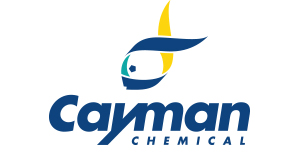Nargenicin, CAS 70695-02-2
Nargenicin, CAS 70695-02-2
SKU
CAY25456-5
Packaging Unit
5 mg
Manufacturer
Cayman Chemical
Availability:
loading...
Price is loading...
Shelf life (days): 1460.0
Formulation: A solid
Formal Name: 1H-pyrrole-2-carboxylic acid, (1E,3R,4S,7S,8aS,10aR,11R,12R,13R,14R,14aS,14bS)-3,4,6,7,8,8a,10a,11,12,13,14,14a-dodecahydro-14-hydroxy-4-[(1R)-1-hydroxyethyl]-7-methoxy-1,3,13-trimethyl-6-oxo-11,14b-epoxy-14bH-naphth[2,1-e]oxecin-12-yl ester
Purity: ≥98%
Formula Markup: C28H37NO8
Formula Weight: 515.59532
CAS Number: 70695-02-2
Notes: Nargenicin is a macrolide antibiotic that selectively inhibits the growth of S. aureus, methicilin resistant S. aureus (MRSA), and M. luteus (MICs = 0.6, 0.3, and 2.5 μg/ml, respectively) over a panel of 11 Gram-positive and Gram-negative bacteria (MICs = >80 μg/ml).{42263} It dose-dependently inhibits S. aureus DnaE in the presence of DNase I-activated DNA and E. coli DnaE when used at concentrations of 0.00001-0.1 and 0.01-100 μg/mL, respectively.{42264} In murine BV-2 microglial cells, nargenicin (1 μM) inhibits cytokine expression and nitric oxide production induced by LPS.{42265} Nargenicin (200 μM), when used in combination with 1,25-dihydroxyvitamin D3 or all-trans retinoic acid (Item No. 11017), reduces cell proliferation by 37-47% and increases cell differentiation by 82-85% in HL-60 human myeloid leukemia cells.{42266} In vivo, nargenicin (50 mg/kg, p.o.) reduces the number of colony-forming units (CFUs) in infected kidneys by 100,000-fold in a murine model of S. aureus infection.{42264}
Formulation: A solid
Formal Name: 1H-pyrrole-2-carboxylic acid, (1E,3R,4S,7S,8aS,10aR,11R,12R,13R,14R,14aS,14bS)-3,4,6,7,8,8a,10a,11,12,13,14,14a-dodecahydro-14-hydroxy-4-[(1R)-1-hydroxyethyl]-7-methoxy-1,3,13-trimethyl-6-oxo-11,14b-epoxy-14bH-naphth[2,1-e]oxecin-12-yl ester
Purity: ≥98%
Formula Markup: C28H37NO8
Formula Weight: 515.59532
CAS Number: 70695-02-2
Notes: Nargenicin is a macrolide antibiotic that selectively inhibits the growth of S. aureus, methicilin resistant S. aureus (MRSA), and M. luteus (MICs = 0.6, 0.3, and 2.5 μg/ml, respectively) over a panel of 11 Gram-positive and Gram-negative bacteria (MICs = >80 μg/ml).{42263} It dose-dependently inhibits S. aureus DnaE in the presence of DNase I-activated DNA and E. coli DnaE when used at concentrations of 0.00001-0.1 and 0.01-100 μg/mL, respectively.{42264} In murine BV-2 microglial cells, nargenicin (1 μM) inhibits cytokine expression and nitric oxide production induced by LPS.{42265} Nargenicin (200 μM), when used in combination with 1,25-dihydroxyvitamin D3 or all-trans retinoic acid (Item No. 11017), reduces cell proliferation by 37-47% and increases cell differentiation by 82-85% in HL-60 human myeloid leukemia cells.{42266} In vivo, nargenicin (50 mg/kg, p.o.) reduces the number of colony-forming units (CFUs) in infected kidneys by 100,000-fold in a murine model of S. aureus infection.{42264}

 Deutsch
Deutsch










